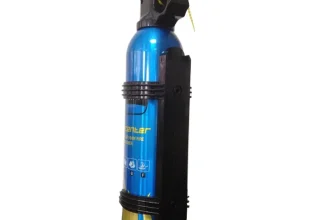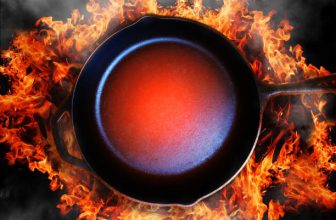Fire extinguishers are an important part of every home and workplace. They are a critical tool for anyone to use in the event of a fire emergency. To ensure that they are working properly and will be reliable when needed, they require proper maintenance and care.
One of the most important steps in this process is hydrostatic testing, which is necessary to test their internal components and pressure levels. Hydrostatic testing involves pressurizing the extinguisher with water or nitrogen gas at up to three times its specified power rating.
This allows us to check if any weaknesses or defects have occurred inside the cylinder and whether it still meets safety standards. It’s an essential part of keeping your family safe and maintaining peace of mind when it comes to fires.
In this article, we’ll explore what hydrostatic testing is, how to prepare for the tests, types of fire extinguishers that can be tested, the steps involved in the hydrostatic testing process, benefits and drawbacks associated with testing, as well as some concluding remarks.
What is Hydrostatic Testing?
Hydrostatic testing is a method of checking for leaks, defects or cracks in pressure vessels using pressurized water.
The pressure used during hydrostatic testing must be higher than the normal operating pressure of the vessel being tested. This ensures that any weaknesses or damages caused due to over pressure can be detected. If it passes this test, then it means that it can withstand the pressures that are expected to reach when in service.
Hydrostatic tests are also used to ensure quality control and safety standards for fire extinguishers, as any failure during use could result in injury or death. During the hydrostatic test, water is pumped into the extinguisher at several times greater than its designated working pressure to find out whether any weak spots have formed due to corrosion, damage or age.
After this process has been completed, the extinguisher is re-filled with regular extinguishing agent and put back into service, ready to be used in case of an emergency.
Types of Fire Extinguishers That Can Be Hydrostatically Tested
Hydrostatic tests can be conducted on a variety of fire extinguisher types, including dry chemical, water-based foam, carbon dioxide, and halon. Each type of fire extinguisher has its own unique requirements for testing that must be adhered to for it to retain its UL rating.
Dry chemical fire extinguishers should be subjected to a static pressure of at least twice the specified operating pressure or 500 psi, whichever is greater.
Water-based foam fire extinguishers must also pass a hydrostatic test with a pressure of at least 300 psi or three times the rated service pressure, whichever is greater.
Carbon dioxide and halon fire extinguishers are required to undergo hydrostatic testing with a pressure two times the rated service pressure.
All tests should last at least 5 minutes and must be carried out under controlled conditions in accordance with NFPA 10 standards.
It is important to note that not all types of fire extinguishers are suitable for hydrostatic testing and some may not pass the test due to design limitations or material degradation over time.
If any signs of damage are present during the visual inspection before the test starts, then hydrostatic testing cannot proceed and must be postponed until any necessary repairs have been made.
Prerequisites for Fire Extinguisher Hydrostatic Testing
Before a fire extinguisher can undergo hydrostatic testing, there are certain prerequisites that must be met. These include ensuring that the device is clean and free of any contaminants, such as dirt and dust. The cylinder should be checked for leaks, and it should be verified that the label on the fire extinguisher contains the correct information.
All parts, such as seals and connections, should be in good working order. Any fire extinguishers with visible damage should not be tested until all repairs have been completed. Before beginning, the pressure gauge should also be checked to ensure that it is functioning properly.
All fittings and connections should then be checked for tightness and any loose parts should be tightened prior to beginning the test.
Any contents in the fire extinguisher should be drained before the test begins so that the pressure results are accurate.
All personnel conducting the test must wear protective clothing and use appropriate safety equipment to minimize risks of injury or illness during the test.
Safety Protocols to Follow During Tests
When conducting a hydrostatic test, it is essential to follow all safety protocols to ensure the safety of personnel working on or around the fire extinguisher.
This includes wearing protective clothing, such as glasses and gloves, when handling pressurized gas or liquid. It is important to keep all tools and equipment away from the test area and use appropriate barriers to protect against any potential hazards.
All personnel must stay in designated safe areas at a minimum of ten feet away from the test area. Finally, all personnel should be briefed on the operation of the fire extinguisher before beginning any tests and must always follow established procedures.
Steps Involved in the Hydrostatic Testing Process
The testing process consists of several steps that must be carefully followed to ensure the safety of personnel and correctly test the fire extinguisher.
The first step is a visual inspection, which is used to identify any signs of damage or corrosion that could prevent proper functioning.
Next, the pressure vessel should be filled with water and securely sealed to maintain an adequate amount of pressure for testing.
Afterward, all valves should be closed and tested for leakage before raising the pressure to test levels which can take up to 15 minutes depending on size.
Once the equipment has reached its required pressure, it must remain there for at least 5 minutes in order for it to be considered a successful hydrostatic test.
Finally, after the appropriate time has elapsed, the pressure should be slowly released through a valve until it reaches zero.
Once this is complete, a post-test inspection can be done to determine if there are any signs of damage or deterioration before reassembling and returning it back into service.
Benefits of Hydrostatic Testing
Hydrostatic testing provides a variety of benefits for businesses and organizations who rely on the safety and efficacy of their fire extinguishers.
Firstly, hydrostatic testing can detect any hidden defects in the equipment that could cause malfunctioning during an emergency.
It can provide peace of mind knowing that all fire extinguishers are working correctly and up to code according to NFPA standards. The test also helps identify worn or damaged parts that may need to be replaced, potentially avoiding costly repairs or breakdowns in the future.
Lastly, hydrostatic testing allows companies to remain compliant with various codes and regulations; ensuring they are meeting all safety requirements and protecting personnel from harm.
Conclusion
Hydrostatic testing can be a valuable tool in maintaining the safety and effectiveness of fire extinguishers and other equipment.
While there are some drawbacks to the process, these should not dissuade businesses or organizations from taking advantage of its many benefits. Tests provide peace of mind knowing that all systems are working correctly according to specific codes and standards, leading to increased safety and compliance.
Ultimately, hydrostatic testing is an invaluable resource that should not be overlooked.
Frequently Asked Questions
How often should I inspect my fire extinguisher for wear and tear?
It is recommended that you inspect your fire extinguisher at least once a month to ensure it is in proper working order. During this inspection, look for signs of corrosion, rusting, missing or broken parts, blocked nozzles, leaking valves, and other visible damage. Make sure the pressure gauge indicates the correct operating pressure for your particular fire extinguisher.
How often should fire extinguishers be tested hydrostatically?
The frequency of hydrostatic testing for fire extinguishers varies depending on the type and class of extinguisher. According to NFPA 10, Class K and “all other” extinguishers must be hydrostatically tested every 12 years, while Class BC, ABC, and D must be tested every 6 years.
It is important to note that some jurisdictions may have different requirements in place regarding hydostatic testing so it is best to check with local authorities before scheduling any tests.
How do I know if my fire extinguisher has been hydrostatically tested?
You can check the inspection tag attached to your fire extinguisher. This tag should include the date of the last hydrostatic test, as well as the signature of the technician who performed it.
Certain fire extinguishers may also come with a digital record that can be accessed online and checked for details about when it was last tested hydrostatically.
Does a fire extinguisher need to be refilled after a hydrostatic test?
Yes, it is recommended that a fire extinguisher be refilled after a hydrostatic test to ensure proper operation and safety. It is important to note that the type of extinguisher being tested, as well as the technician performing the test will impact how they are refilled.
Some technicians may simply refill the extinguisher with pressurized air while others may use a specialized refilling machine to re-pressurize the extinguisher up to manufacturer specifications.
How much does it cost to have a fire extinguisher hydrostatically tested?
The cost of having a fire extinguisher hydrostatically tested can vary depending on the type and size of extinguisher, as well as the technician or service provider performing the test.
Generally speaking, it may range from around $50 to $200 for a standard fire extinguisher, but some technicians may offer discounts for bulk tests or larger orders.
It is best to contact multiple technicians in order to find the most affordable option that meets your needs.
Are there any risks associated with hydrostatic testing of fire extinguishers?
Yes, there are certain risks associated with hydrostatic testing of fire extinguishers. One of the most common risks is water damage to the fire extinguisher and its parts due to leakage.
If not done properly, the hydrostatic test can improperly measure the internal pressure in the extinguisher, leading to inaccurate results. For this reason, it is important to use a qualified technician when performing a hydrostatic test on your fire extinguisher.
How can I determine if my local jurisdiction has specific requirements relating to hydrostatic testing for fire extinguishers?
You can contact your local fire department or check your city or county regulations to determine the specific requirements for hydrostatic testing in your area.
You should consult with a certified technician to ensure that any fire extinguisher you are using conforms to local codes and standards.
Are expired fire extinguishers still effective?
Generally, an expired fire extinguisher is no longer effective and should be replaced. Fire extinguishers come with a limited lifespan and will expire after a certain date, usually around 6 to 12 years depending on the type of extinguisher.
Expired fire extinguishers may not work as intended or might even become dangerous due to corrosion, rusting, or other wear and tear.





